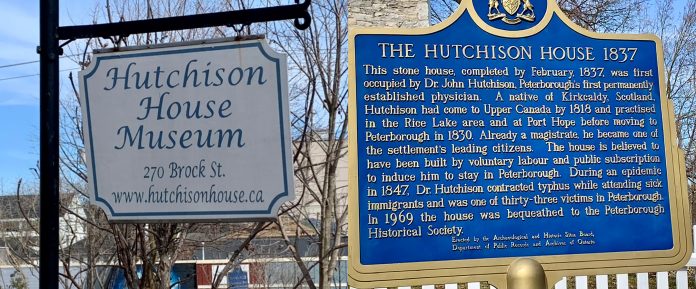Nestled in the core of downtown Peterborough, a house built for a Scottish doctor in 1835 seemingly stands paused in the 19th century as the land around it changes.

It’s a house built by the community to ensure Dr. John Hutchison stayed to provide medical services.
“Dr. Hutchison was renting a one room house down on Simcoe and Water Street area,” says Don Willcock, visitor services receptionist at the Peterborough Museum and Archives 30-year volunteer at the Peterborough Historical Society.
With a wife and five kids, the small house was getting crowded. However, Peterborough was rural and most people paid Dr. Hutchison with goods and services instead of cash, so he didn’t have money for a bigger house, says Willcock.
As a result, Willcock says, “he was struggling and thinking about going back to what they called The Front – Cobourg, Port Hope area – or going further towards Toronto.”
Hutchison was the only doctor trained as a general practitioner. So, the community in the area made a deal with the doctor and the house was “built as a bribe,” says Willcock. The house at 270 Brock Street would be built for Hutchison and his family if he agreed to stay in Peterborough.
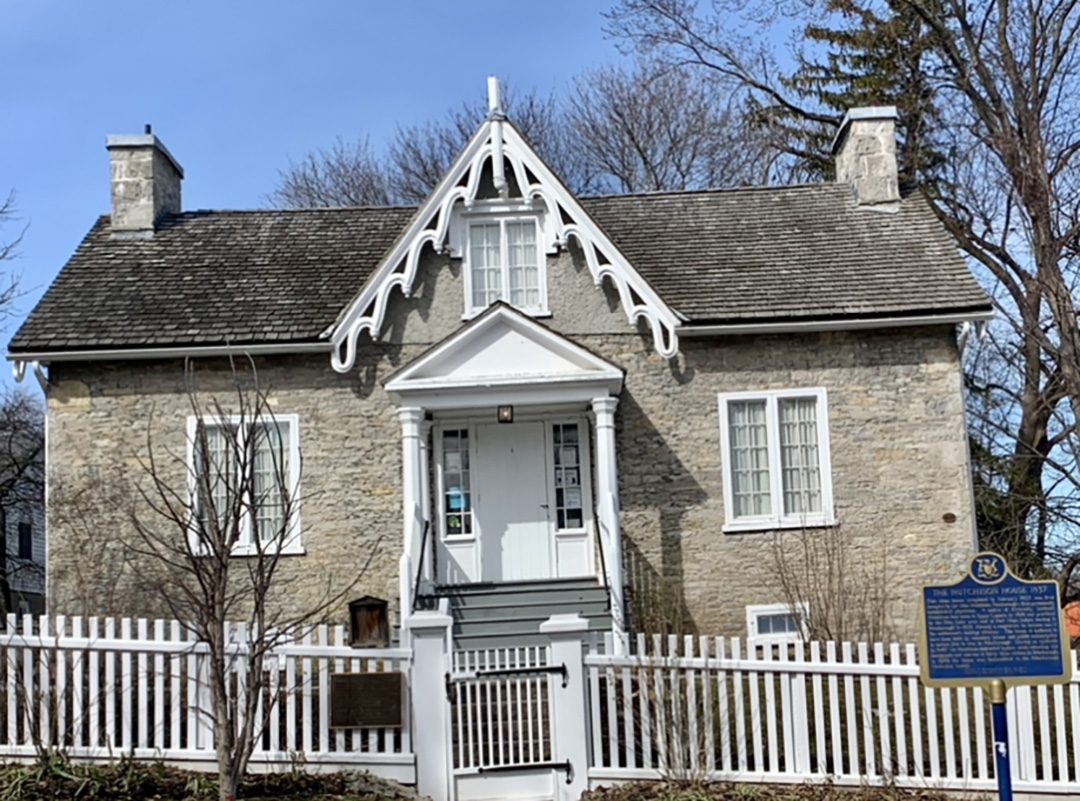
“Volunteers have always been a part of the house. It was built by volunteers initially for the doctor,” Linda Chandler says.
Chandler has been involved with the Hutchison House Museum for more than 30 years. She has done everything at the museum, from acting as curator to putting together exhibits and being involved in fundraising.
While the museum does not have an official archivist, Erin Panepinto, curator and manager of the Hutchison House Museum, credits Chandler with being one of its longest standing volunteers.
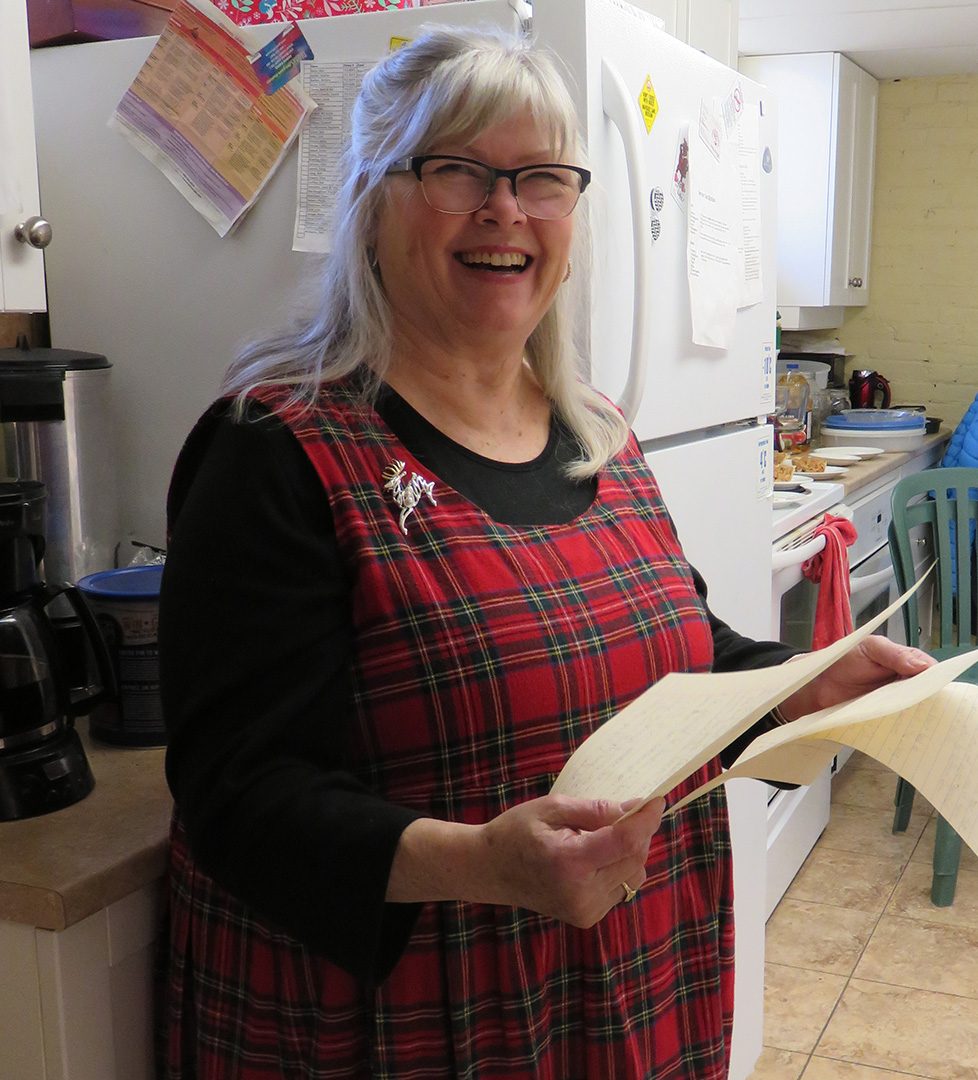
The Hutchison House Museum serves as a reminder of the powerful community that settled and continues to grow in Peterborough area through the years. The house-turned-museum has always been volunteer-focused.
The house was willed to the community and restored by volunteers.

Not only did volunteers build the house to keep Dr. Hutchison in town in 1835, but the house was restored in the 1970s when the owner died suddenly, and it was discovered she had willed the property to the Peterborough Historical Society.
At the time, there was a “renewed sense of history and historical sites and the celebration of Canada’s 100th (and the years following the country’s centennial of 1967),” Panepinto says.
But at the same time, says Panepinto, the 1960s and the 1970s saw a lot of historical sites being torn down to make way for modern progress.
The owner, Jeanette Connal Brown, “didn’t want to see this building, because of its historical value, didn’t want to see it destroyed,” Panepinto says.
During the restoration process, Chandler says, the volunteers restoring the house were able to find little spots in some rooms which revealed the original paint colour. So, where they could, they repainted the rooms and furniture back to their original colour.
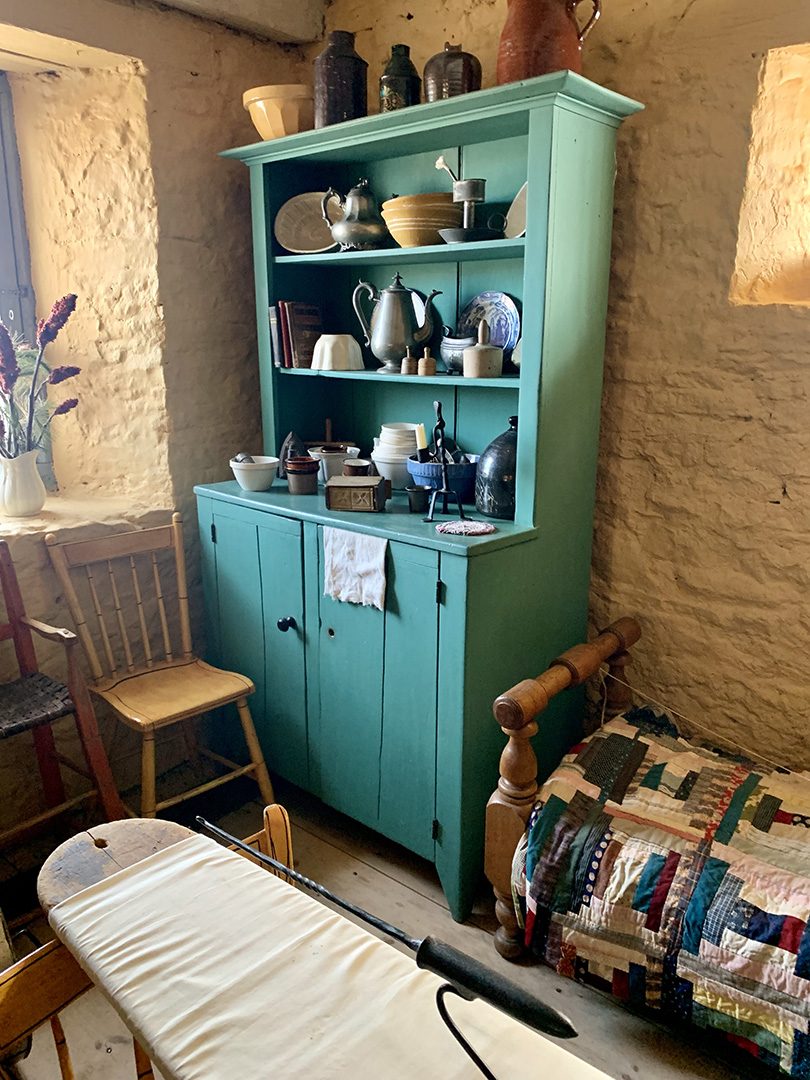
Today, the museum is home to a dedicated volunteer-base which hosts guided tours, luncheons, themed teas, and day-camps for kids.
However, like many public organizations in the past two years, the museum had to get creative in its programming in the face of pandemic restrictions.
For St. Patrick’s Day 2021, The Hutchison House did a curbside meal pickup in place of its typical lunch to commemorate March 17. Since the pandemic forced the house to stay closed most of 2020 and 2021, volunteers cooked and packaged the meals for members of the community to pick up.
“There was a brief period that we were open in February (2021),” Panepinto says, “but not enough that we could run any of the events that we would normally do that time of year.”
Last summer, however, Panepinto says they were able to host outdoor teas and guided tours of the gardens.

Even before pandemic restrictions, the size of the house has always limited the number of people the museum can accommodate at once, says Panepinto.
The Hutchison House was one of the first stone houses built in Peterborough.
Prior to the house and the rest of Peterborough being built up, the area was wooded. The main township area was settled in 1820 when European Adam Scott set up his mill, says Willcock.
“It was actually Adam Scott who was also in in the Cobourg, Port Hope area,” Willcock says. “It was his suggestion to the doctor that he should come to Peterborough.”

While the area that would become Peterborough township was rural at the time Scott arrived, the area is long been home to Indigenous populations.
The Peterborough page of the Ontario Public Interest Research Group (OPIRG) website includes a land acknowledgement which reads: “We honour that we are located in Nogojiwanong, which is the Anishinaabe word for ‘place at the end of the rapids’, which refers to the gathering place at the end of the Odenabe river.”
Included in this land acknowledgment is the recognition that being in Nogojiwanong “also connects us to Curve Lake First Nation, Alderville First Nation, Hiawatha First Nation, and the Mississaugas of Scugog Island First Nation.”
The full OPIRG Peterborough land acknowledgment can be found at opirgptbo.ca.
“Dr. Hutchison was actually the government-appointed doctor to the Hiawatha and the Curve Lake bands,” Willcock says. “He probably learned a lot of the plant medicine lore from the elders because his training was in Scotland.”
A pair of moccasins sits on display in one of the rooms of The Hutchison House. Willcock says it’s believed they were gifted to the doctor after he had treated someone from the Indigenous community.
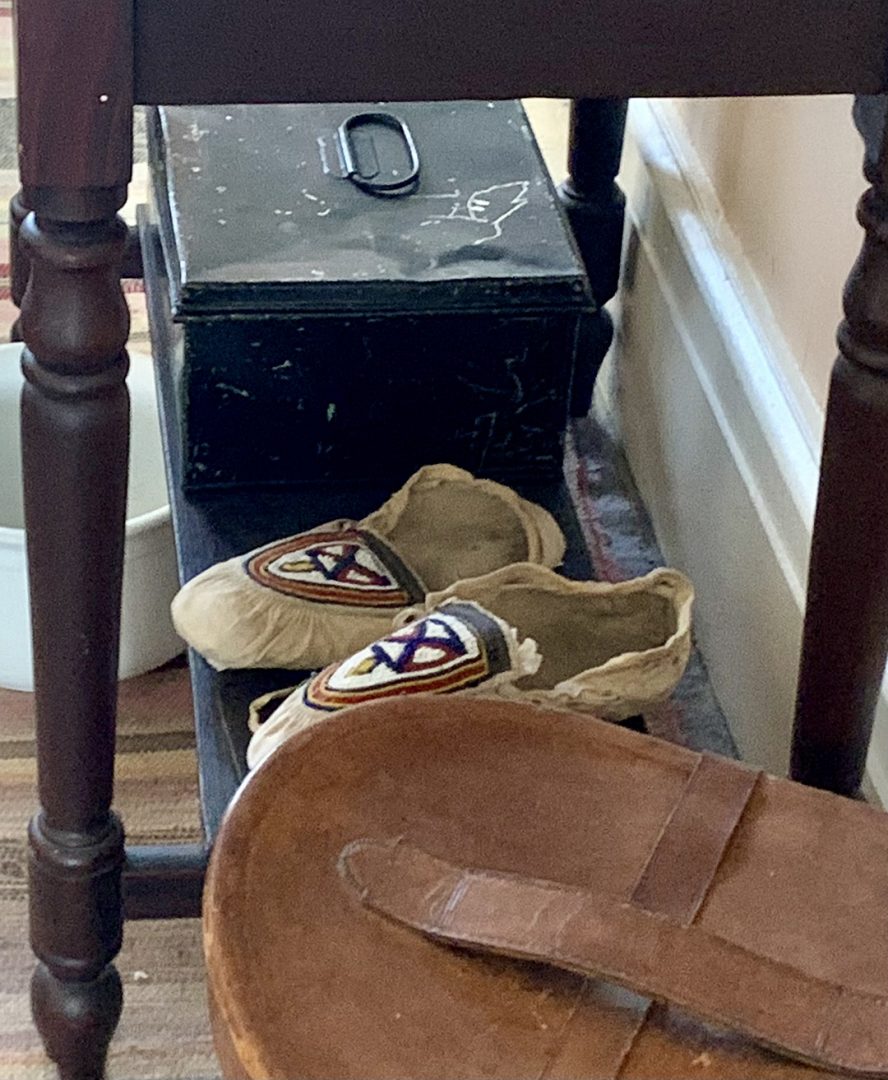
The museum is filled with artifacts that fit the time. Many of them gifted to the Peterborough Historical Society by prominent families in the area.
The story of The Hutchison House is one that really is all about volunteers, says Chandler.
“So, it was sort of built by volunteers for the Hutchison family,” says Panepinto, “and it was restored by volunteers to eventually become a museum.”




